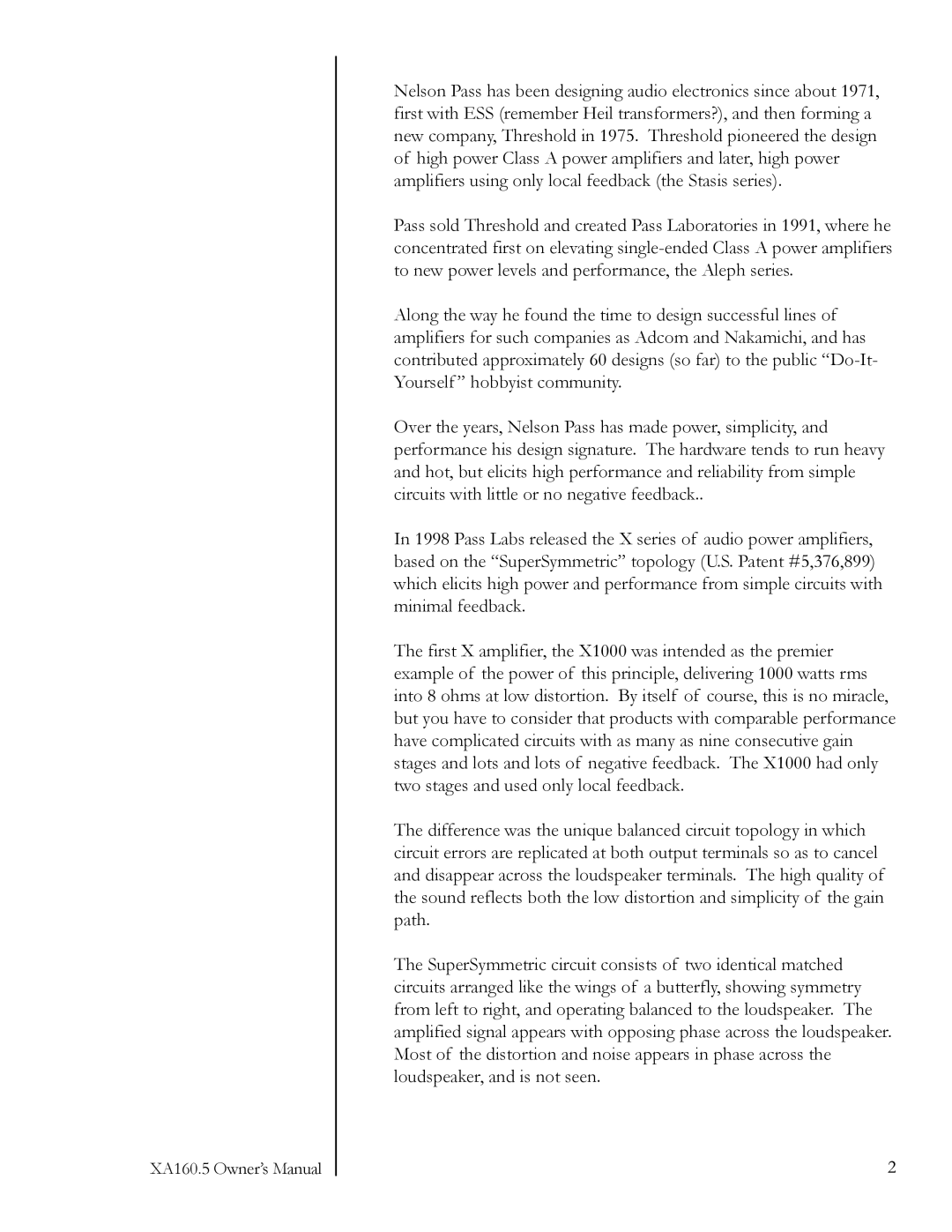1XA160.5 specifications
Pass Labs, renowned for its high-performance amplifiers, has made waves with its 1XA160.5 power amplifier. This product epitomizes the brand's commitment to sonic excellence, technical sophistication, and exceptional build quality. Emphasizing a pure, uncolored sound, the 1XA160.5 offers audiophiles a window into the heart of their music.At the core of the 1XA160.5 is its innovative single-ended Class A design. This architecture allows the amplifier to deliver a lush and natural sound characteristic, which is the hallmark of Pass Labs’ engineering philosophy. Being Class A means that the amplifier operates in its linear range at all times, resulting in minimal distortion and an incredibly rich audio experience. With a power rating of 160 watts per channel at 8 ohms and 320 watts at 4 ohms, the 1XA160.5 provides ample power to drive even the most demanding speakers.
One of the defining technologies of the Pass Labs 1XA160.5 is its use of a high-current, high-performance output stage. This design allows the amplifier to maintain dynamic control even at high volumes, ensuring that transient peaks are handled effortlessly. Coupled with a robust power supply which features a large transformer and substantial capacitance, the 1XA160.5 guarantees high performance across a wide dynamic range.
Furthermore, the 1XA160.5 is built with an emphasis on thermal management, utilizing efficient heat sinks that allow the amplifier to maintain optimal operating temperatures during extended listening sessions. Its solid aluminum chassis not only adds to its aesthetic appeal but also enhances structural integrity, minimizing microphonics and unwanted vibrations.
The 1XA160.5 amplifier is equipped with a set of balanced XLR and unbalanced RCA inputs, ensuring compatibility with various source components. It also features proprietary circuitry that enhances feedback stability and optimizes distortion performance, contributing to a cleaner, more accurate sound reproduction.
In summary, the Pass Labs 1XA160.5 power amplifier stands as a testament to the brand's dedication to authentic audio playback. With its Class A design, high-current output stage, exceptional build quality, and superior thermal management, it offers audiophiles a compelling option for achieving an unparalleled listening experience. The 1XA160.5 is not just an amplifier; it is a bridge to the emotional core of your music.
